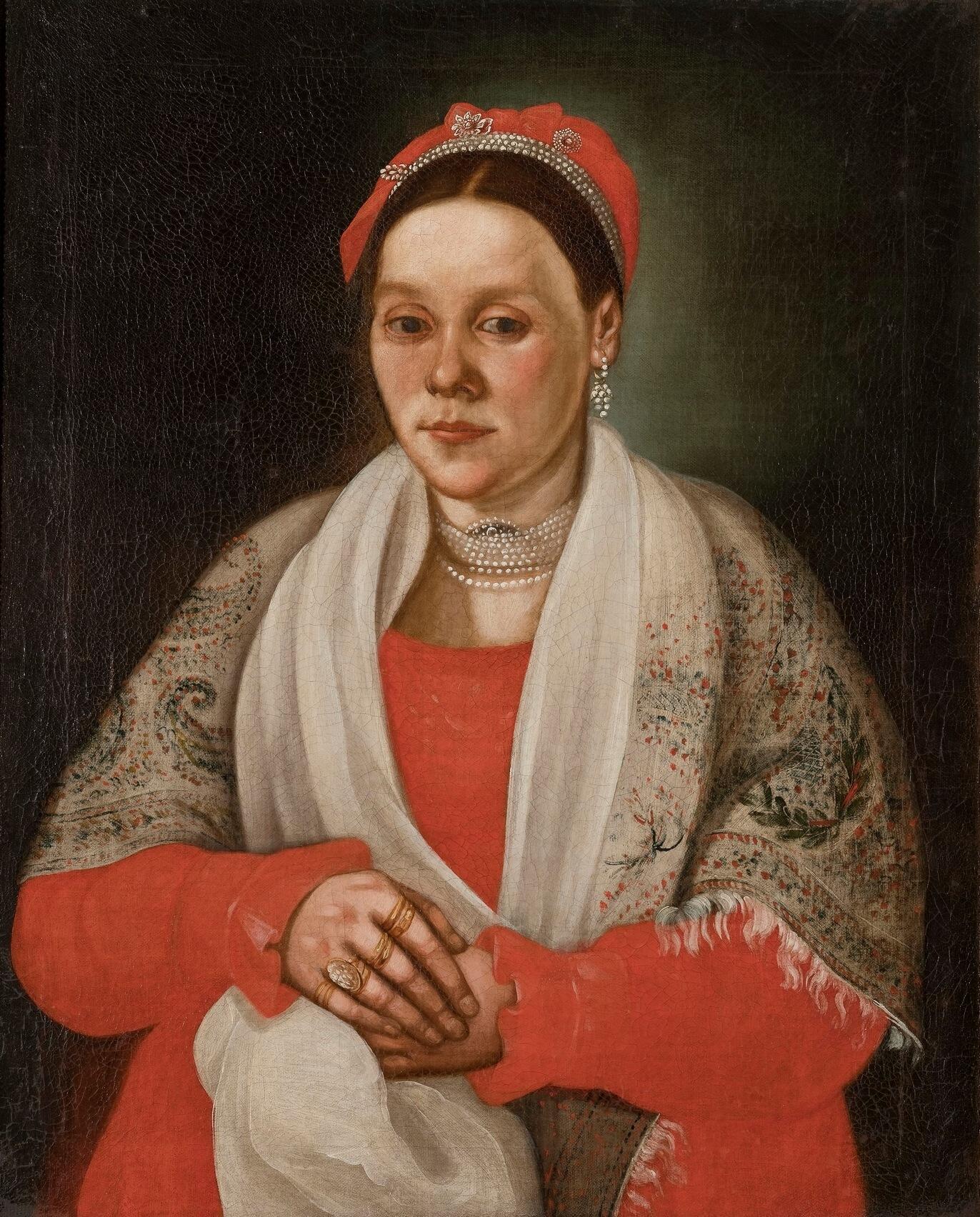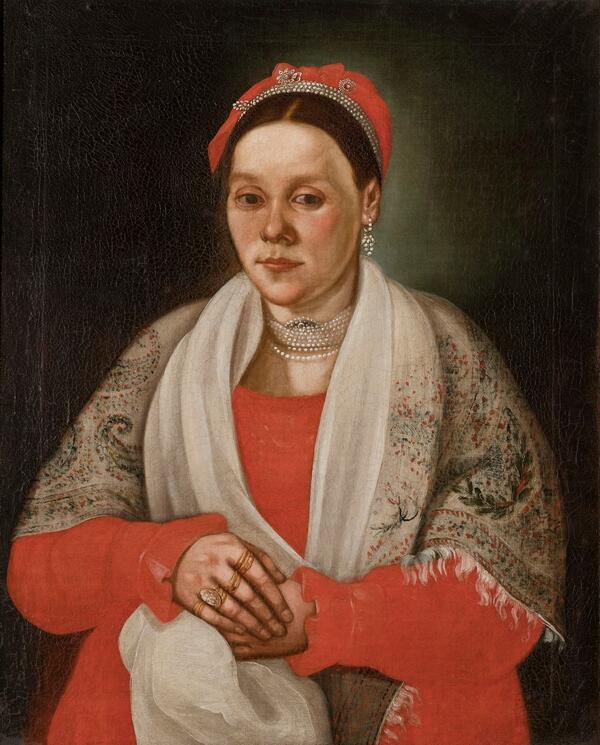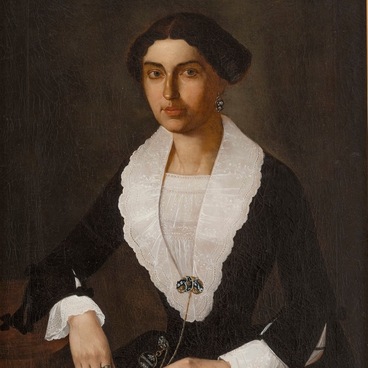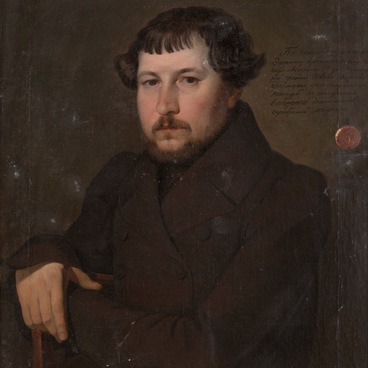The portrait of the merchant’s wife Kiseleva was painted around the 1830s. At that time the merchant’s portrait stood out as a separate original genre with its own artistic canons.
Portraits of representatives of merchant families of the 18th — early 19th centuries were painted by artists on demand mainly for family galleries. They were painted infrequently, usually in honor of some important events. Portraits were also ordered for charitable institutions or government agencies. The masters who created these canvases usually remained anonymous.
The genre existed at the junction of professional and primitive art and incorporated features of both. Merchant portraiture was close to religious painting, as many merchants were Old Believers. Models were depicted in certain poses, on a dark homogeneous background. The clothing was of great importance. It could be Russian folk costumes or clothes in the latest fashion of the time. Merchants’ wives were depicted wearing scarves and shawls, pearl jewelry: earrings, rings, signet rings. In portraits, they were most often turned in three-quarters, with the right hand covering the left. To add emotionality and softness to the image, artists painted a white scarf in the hands of a women.
These portraits did not always adhere to strict proportions, as in primitive art. The figures were somewhat flattened, bright local colors were chosen for clothing, the texture of fabrics and interior details were most often not depicted. Artists sought to create a certain image: a confident, solid, godly married woman. This image had to reflect respect for the family and be edifying in nature.
The merchant’s wife in the portrait by an unknown artist belonged to the family of the famous merchants in Murom, the Kiselevs. The portrait, as well as the paired images of the Kiselevs, came to the museum’s collection from their family gallery.
The artist presented the model in a simplified “Russian” outfit. Kiseleva is dressed in a red dress, which the master painted without volume and details. The headdress is matched to its tone and the front part is embroidered with pearls. The woman put on her shoulders a light shawl with a “cucumber” ornament, that is almond-shaped pattern with a pointed and curved top end. A white silk scarf was thrown over the shawl. Presumably, this is a traditional accessory, a headscarf “shirinka”, which models in other merchant portraits hold in their hands.
Portraits of representatives of merchant families of the 18th — early 19th centuries were painted by artists on demand mainly for family galleries. They were painted infrequently, usually in honor of some important events. Portraits were also ordered for charitable institutions or government agencies. The masters who created these canvases usually remained anonymous.
The genre existed at the junction of professional and primitive art and incorporated features of both. Merchant portraiture was close to religious painting, as many merchants were Old Believers. Models were depicted in certain poses, on a dark homogeneous background. The clothing was of great importance. It could be Russian folk costumes or clothes in the latest fashion of the time. Merchants’ wives were depicted wearing scarves and shawls, pearl jewelry: earrings, rings, signet rings. In portraits, they were most often turned in three-quarters, with the right hand covering the left. To add emotionality and softness to the image, artists painted a white scarf in the hands of a women.
These portraits did not always adhere to strict proportions, as in primitive art. The figures were somewhat flattened, bright local colors were chosen for clothing, the texture of fabrics and interior details were most often not depicted. Artists sought to create a certain image: a confident, solid, godly married woman. This image had to reflect respect for the family and be edifying in nature.
The merchant’s wife in the portrait by an unknown artist belonged to the family of the famous merchants in Murom, the Kiselevs. The portrait, as well as the paired images of the Kiselevs, came to the museum’s collection from their family gallery.
The artist presented the model in a simplified “Russian” outfit. Kiseleva is dressed in a red dress, which the master painted without volume and details. The headdress is matched to its tone and the front part is embroidered with pearls. The woman put on her shoulders a light shawl with a “cucumber” ornament, that is almond-shaped pattern with a pointed and curved top end. A white silk scarf was thrown over the shawl. Presumably, this is a traditional accessory, a headscarf “shirinka”, which models in other merchant portraits hold in their hands.



